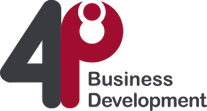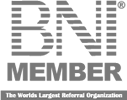Complicated, but doesn’t need to be confusing …
One of the main reasons people give for leaving organisations is that they have stopped growing. Growth brings energy, vitality, life and challenge so without growth, you’re just going through the motions …

Employee engagement is vital for any organisation that wishes to grow!
copyright: 4p business development
You need to create a culture of learning and growth within your business and you will maximise the talent of your team and see a greater return on your investment.
Making employee engagement a positive experience can prove to be extremely attractive, providing:
Enhancement
Efficiency
Experience
Effectiveness
Transformation and growth
Attracting the best people to your business and subsequently keeping hold of them is one of the biggest challenges for any growing business.
Engaging with your employees is a key factor to motivation and retention. People who feel valued as an individual and are included in the company’s goals, will work harder, smarter and feel appreciated.
Employers are finding that top candidates are hard to find, expensive and often snapped up by high-profile blue-chip companies. Maximizing the skills available to you within your own organisation is far more beneficial and profitable.
“Have you heard about the three Es?”
Employee Engagement is often confused with the idea of employee satisfaction. While the two are related, they are unique. Satisfaction has to do with contentment, while engagement is about connection.
We may see an employee who is satisfied with their salary and the people they work with, but that doesn’t mean they are engaged. An engaged employee is someone who is more than satisfied. They are inspired, interested and committed to their work.
In some ways, being engaged can be considered the opposite of being burnt out. A burnt out employee feels cynical about their work, but when employees are engaged, they are positive about what they do and how it contributes to their personal and company-wide goals.
Employee Experience begins the moment someone starts the application process at your organisation to the day they take their exit survey after leaving the company. This experience isn’t static. In fact, it can change from day to day.
While employee experience can and will fluctuate over time, it’s useful to think about it in terms of key milestones in the overall employee lifecycle – candidate onboarding, training, exit, alumni.
Employee Effectiveness as the next generation of performance reviews. They both communicate how an individual or team is doing, but employee effectiveness also empowers individuals and teams to drive their own development.
It’s not about telling them what they need to do, but giving them the feedback and the resources to decide their own career path. When the right criteria and metrics are used, employee effectiveness also eliminates the biases that often occur with subjective performance reviews.
Some of the aspects you may wish to give your consideration to are:
How to increase employee engagement and grow your workplace culture
How to understand the employee experience at your workplace and why it matters
How to conduct performance reviews to provide meaningful feedback on employee effectiveness
How to conduct an employee survey
Untangling what employee engagement really means can be complicated, but that doesn’t mean it needs to be confusing. Once you understand how it can bring benefits to your organisation, you can start to build a feedback platform to gain better insights about your employees.
“And with that information, you can act to make your company the best it can be for everyone!”
If you’d like to learn more about employee engagement and how it can really help you to grow do give me a call on 01280 700405 or click here to ping me an email and let’s see how I can help you.
Until next time …

KATH BONNER-DUNHAM
|
PS: |
If you’re looking for a partner to help grow your business, visit www.4pbusinessdevelopment.co.uk to discover how 4P Business Development can help you! |










